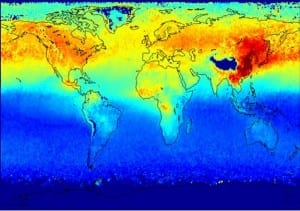Worst case scenario climate change may be unavoidable
September 24, 2014Report on climate change predicts a troubling future
Leaders from around the world flocked to New York City earlier this week to attend a special, one-day United Nations summit on climate change. The gathering focused on a report from the Global Carbon Project, which shows that the world is on course to experience the worst case scenario of climate change. Despite the efforts that several countries have made to mitigate the effects of climate change, it may be too late to avoid the devastating consequences of this phenomenon.
Not enough action has been taken on the emissions problem
During the 2009 United Nations Climate Change Conference, more than 100 nations pledged to take action on climate change by focusing on emissions reduction. Since then, there has been a significant shift in government policies concerning emissions and new regulations have helped reduce the amount of carbon dioxide that is being released into the environment. Clean energy has also become less expensive over the past few years, thanks to government support and investments from the private sector. The problem, however, is that not enough has been done to adequately reduce emissions. In fact, emissions have been on the rise.
Emissions continue to grow despite some efforts made by governments throughout the world
According to the report from the Global Carbon Project, emissions from fossil-fuels grew by 2.3% in 2013. Emissions are expected to grow by another 2.5% this year. The report predicts that emissions will continue to rise over the next five years, despite regulations and government policies meant to curb emissions production. The report suggests that there has been little to no progress, despite the promises that countries have made on the matter of climate change.
Global temperatures could rise by 41 degrees due to climate change and the lack of effort made to stop it
In the worst case scenario, climate change is expected to increase out global thermal reading from temperatures measured around the time period of the industrial revolution to year 2100 by an estimated 41 degrees Fahrenheit. This would have a significant impact on much of the world’s agriculture and would lead to higher sea levels, threatening large coastal cities that also serve as dense population centers.

 HFN News is your leading source for fresh hydrogen and renewable energy updates. Amid the fast-paced growth of hydrogen companies, we provide top-notch news and insights about this exciting sector. Our coverage spans from hydrogen cars to global sustainable initiatives, and we highlight the latest in green jobs and developing hydrogen hubs. We invite you to share your local hydrogen news and explore today’s renewable energy job listings on our site. Thanks for choosing HFN News as your trusted guide to the hydrogen and renewable energy world!
HFN News is your leading source for fresh hydrogen and renewable energy updates. Amid the fast-paced growth of hydrogen companies, we provide top-notch news and insights about this exciting sector. Our coverage spans from hydrogen cars to global sustainable initiatives, and we highlight the latest in green jobs and developing hydrogen hubs. We invite you to share your local hydrogen news and explore today’s renewable energy job listings on our site. Thanks for choosing HFN News as your trusted guide to the hydrogen and renewable energy world!